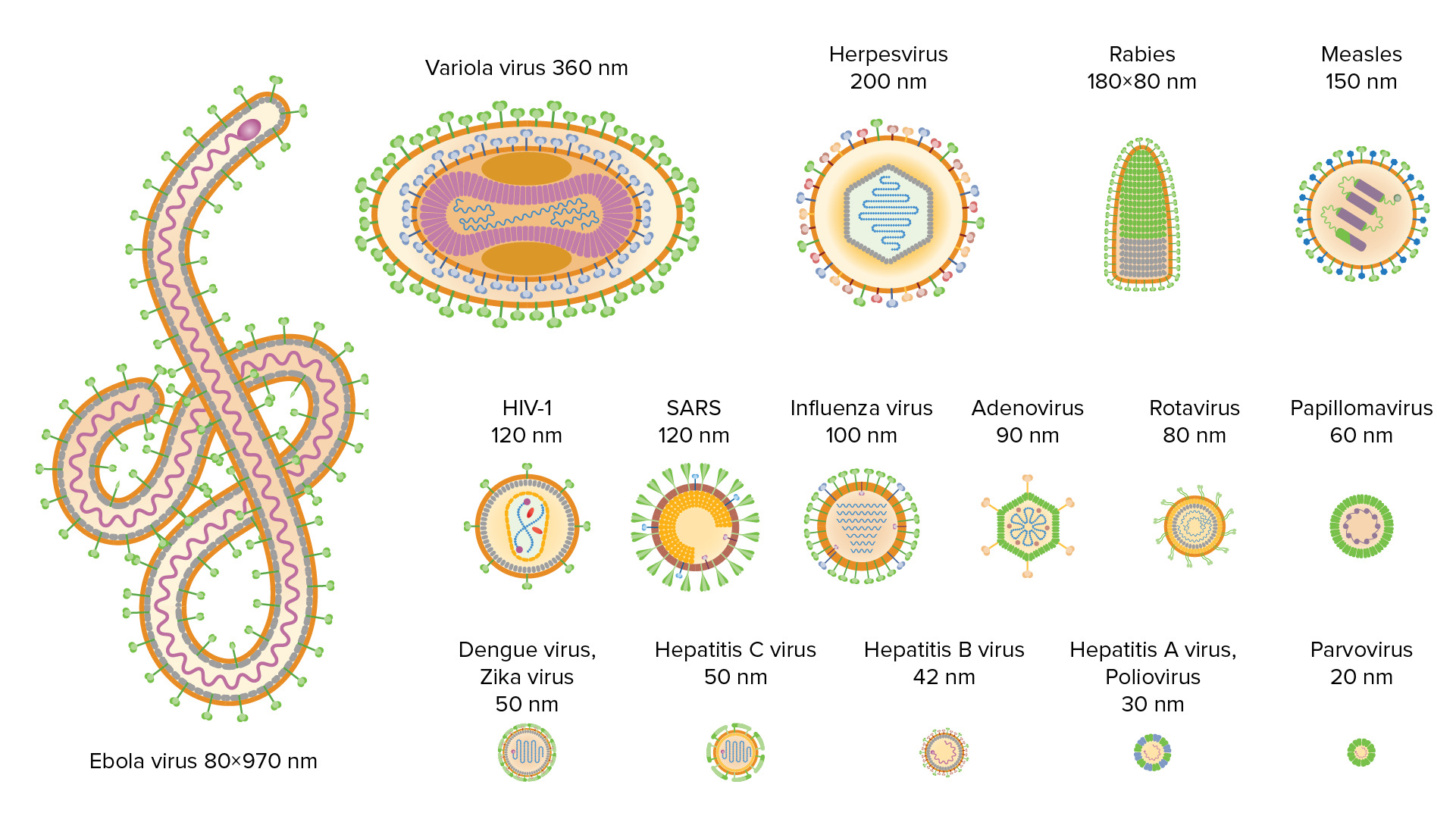Playlist
Show Playlist
Hide Playlist
Gapped Double-stranded DNA (dsDNA) Genomes – DNA Viruses
-
Slides 05 ViralGenomes MicrobiologyAdvanced.pdf
-
Download Lecture Overview
00:01 We have viruses with DNA genomes but they have a different configuration, so this is a separate Baltimore class. These are gapped double-stranded DNA genomes, and the configuration is shown in this slide. You can see most of the DNA is double-stranded but a part of it is single-stranded, and that's the negative strand that we see, we call that a gap. In addition, there is a little piece of RNA attached to the plus strand. You can see that in green. 00:29 And there is also a protein attached to the three prime end of the negative strand. Now this genome is present in the virus particle, it happens to be the genome of hepatitis B virus, an important human pathogen that causes liver infections. This genome when it enters the cell, cannot be made into mRNA. mRNA can only be made from double-stranded DNA among the DNA viruses, it can't be made from gapped DNA, it can't be made from single-stranded DNA. 01:01 And so that's a great fact to know, because now we have three classes of DNA genomes and you can immediately tell how they get to mRNA. That is the beauty of the Baltimore scheme. 01:12 So this genome, as it gets in the cell, cannot be copied to mRNA, so what has to happen? It has to be repaired. So if we start with a gapped double-stranded DNA at the top of this slide, you could see the line going to double-stranded DNA. And that reaction happens in the cell nucleus, the viral DNA goes all the way to the nucleus, and cell enzymes repair it, they make it double-stranded, they take off the protein and they take off that little piece of RNA. Now it can be copied to form mRNA, which is the green molecule shaded to the right. That mRNA is then translated to protein and eventually those proteins will enable the production of new virus particles. 01:52 Of course the other aspect of this replication cycle is we have to make new virus genomes. 01:57 And that's done starting from an mRNA, a plus stranded RNA which you can see on the left-hand flow of this slide. But curiously, that plus RNA is then converted to a minus strand of DNA by an enzyme called Reverse Transcriptase. That minus strand DNA is then made double-stranded and in that process the gaps and the protein and the small piece of RNA, they are all introduced into that molecule and that is what actually gets packaged into new virus particle. 02:31 It's really a unique and maybe baroque replication cycle, and more importantly this enzyme reverse transcriptase, you'll see in another virus family as well. It's called reverse because we used to think the flow of genetic information went from DNA to RNA to protein. But the discovery of this enzyme by others including David Baltimore, who has made this Baltimore scheme, showed that the flow could be reversed from RNA to DNA. That´s why we call it reverse transcriptase. 03:02 Finally, the last of the DNA viruses, these are viruses with single-stranded DNA genomes,
About the Lecture
The lecture Gapped Double-stranded DNA (dsDNA) Genomes – DNA Viruses by Vincent Racaniello, PhD is from the course Viruses.
Included Quiz Questions
Repair of gapped DNA occurs in which organelle?
- Nucleus
- Endoplasmic reticulum
- Mitochondria
- Lysosomes
- Golgi appratus
Without the enzyme reverse transcriptase, what step in the replication process of gapped DNA viruses cannot happen?
- A positive strand of RNA will NOT be converted to a negative strand of DNA.
- DNA will not be cleaved into pieces.
- The mitochondria of the cell will stop working.
- Destabilization of tRNA will occur.
- The mRNA will not be converted to protein.
In gapped double-stranded DNA genome, what is the structure of the portion referred to as the "gap"?
- Single-stranded negative-sense DNA
- Single-stranded positive-sense DNA
- Single-stranded negative-sense RNA
- Double-stranded DNA without histones
Customer reviews
5,0 of 5 stars
| 5 Stars |
|
1 |
| 4 Stars |
|
0 |
| 3 Stars |
|
0 |
| 2 Stars |
|
0 |
| 1 Star |
|
0 |
very clear and detailed explanations,basics and detailed information is well explained.




